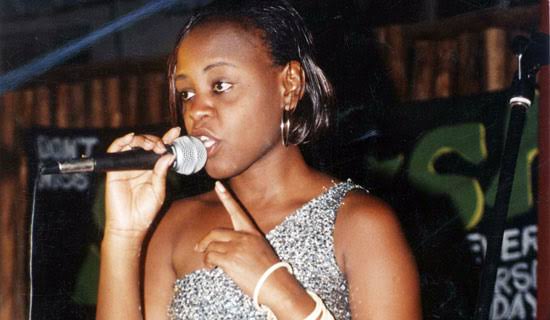Prime
How Imbalu festival will boost tourism

Men perform the imbalu dance. Photo by Yahudu Kitunzi
Following the launch of the imbalu season in Bugisu region early this week, President Museveni, one of the witnesses as courageous young men face the knife in the rite of passage to adulthood, pledged to promote the cultural ceremony for tourism purposes.
According to the Uganda Tourism Board (UTB), this year’s imbalu celebrations have been demarcated as a cultural tourist activity under the theme, “When you unite, love each other for development.”
At the inaugural ceremony at Mutoto grounds in Bulambuli District on Tuesday, President Museveni asked cultural leaders to preserve practices that are relevant to today’s society and turn them into tourist attractions.
Mr Edwin Muzahura, UTB’s marketing manager told the Daily Monitor in a telephone interview that, “The imbalu festival is a key product in the eastern Uganda cluster. We believe that besides wildlife and other natural attraction, culture is an integral part of any society and it can be used to attract thousands of tourists.”
“We are interested in taking people to where they love to be due to the love and beliefs they attach to their cultural practices, events and places,” said John Ssempebwa, UTB’s deputy executive director.
Imbalu means a sharp knife in local Lugisu dialect. It is an activity of the Bamasaaba where boys over 16 years are circumcised as a rite of passage to manhood.
The Bamasaaba Cultural Union (Izu ya Masaba) ensures that their imbalu, a circumcision ritual which symbolises unity, is respected by its people.
Every after two years, the ceremony brings together people from Bulambuli, Sironko, Mbale, Manafwa, and Bududu districts as well as some from western Kenya (the Bakusu) who come to take part in the event. The total population of the Bamasaaba is about six million people spread across Uganda and Kenya.
Imbalu dates back many years
According to Ssempebwa, the Bamasaaba communities agreed to circumcise at once in a signature event at Mutoto grounds located at the footsteps of the Munale hill in Bulambuli District. Ssempebwa also a student of culture says the ceremony dates back to over 1,000 years ago.
At Mutoto grounds stands eight grass thatched houses that represent every county in the Bugisu sub-region. Charles Wepuchulu Wetuma, vice-chairman for Bulambuli District says the bigger house is meant for the Bamasaaba ancestor, Masaaba together with his sons, Mwambu, the first son, Wanale, the second son and Mubuya the last son.

A knife used to circumcise young men from which imbalu draws its name. Photo By Yahudu Kitunzi
What imbalu is about?
According to Wetuma, the imbalu ceremony, is normally presided over by the Umukuuka (Cultural leader of the Bamasaaba) who occupies the biggest house that stands in front of the other small huts, where the candidates for circumcision report before the actual circumcision takes place. This happens at a separate hut located at the lower end of the Mutoto grounds.
Abdul Wachi, a local surgeon says, the entire circumcision procedure takes a minimum of 10 seconds and maximum of 30 seconds.
“We have a local herb called intinyi that induces courage among the boys to face the knife,” says Wachi.
Among the Bagisu, circumcised boys bring pride to the family. However, some flee but are sought during the season and forcefully circumcised.
Although the desire to remove the fore skin of the penis is believed to be spiritually inspired, many fainthearted people have fled the region and taken refuge in other districts where circumcision does not take place.
Gisu women have been taught to secretly report their uncircumcised husbands to the elders and not to marry them to their girls.
This year’s imbalu inaugural ceremony attracted more than 2,000 visitors, a resource that UTB plans to invest in to promote cultural tourism.
“The Bagisu have identified culture as something that has economic value and we want this to be a stepping stone for other communities to emulate them in promoting their cultural events as tourism activities,” says Ssempebwa.
According to UTB, the Imbalu festival is related to the Namugongo Martyrs pilgrimage that adds money into the tourism value chain.
“When people are travelling from Kenya they will need fuel, stop at Namawojolo to buy roasted chicken along the way. They will need accommodation in hotels and food to eat while visiting,” said Ssempebwa.
With the next imbalu ceremony happening in two years’ time in 2016, the government plans to invest in marketing the event through its embassies as a tourism product similar to the mountain gorilla product that fetch Uganda over $17.4 million ever year from about 2,900 gorilla tickets.
Why market imbalu as a tourist attraction?
Edwin Muzahura, the marketing manager of Uganda Tourism Board, says, they are coming out in a strong way to promote culture and imbalu is a key tourism product of eastern Uganda. He says imbalu will complement the other attractions like bull fighting, Mount Elgon, Agro tourism (rice, coffee, beekeeping),Sipi falls, and Wanale hill among many others . Mr Ssempebwa adds that it is likely to attract more that 2,000 tourists every year.




